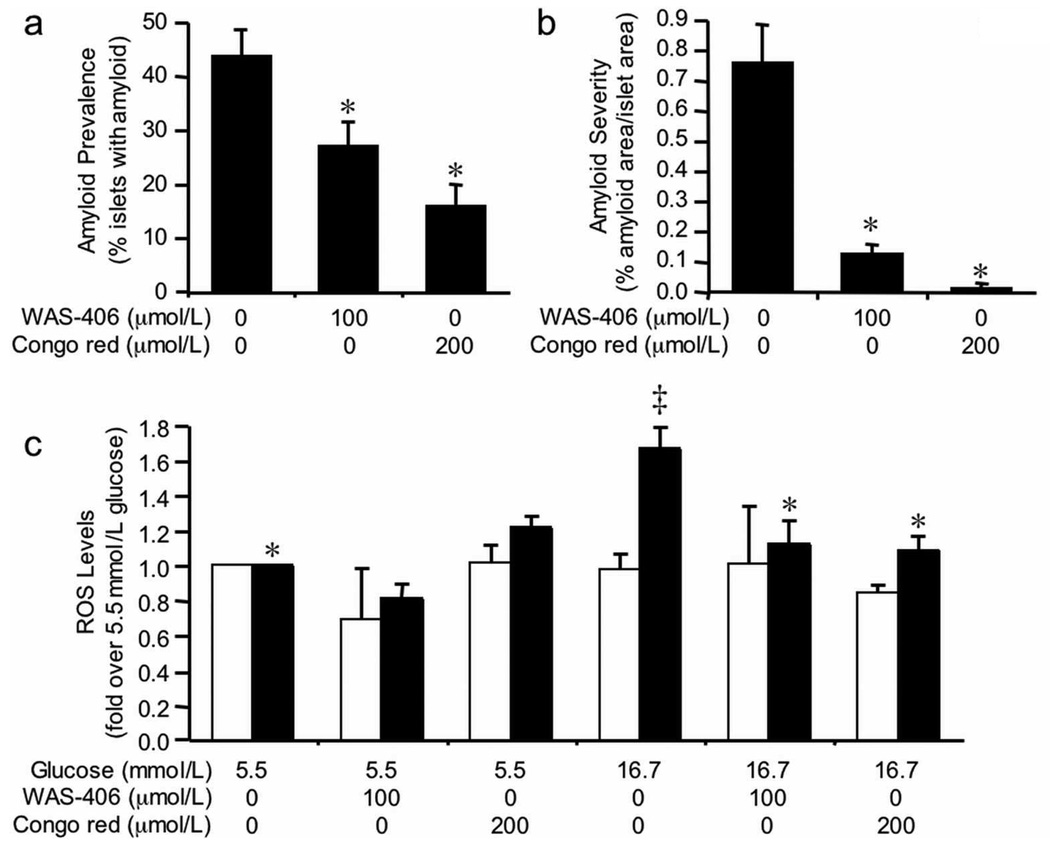Figure 3.
Amyloid prevalence (a) and severity (b) in hIAPP transgenic islets following 48-hour culture in 16.7 mmol/L glucose +/− the amyloid inhibitors, 2-acetamido-1,3,6-tri-O-acetyl-2,4-dideoxy-α-D-xylohexopyranose (WAS-406; 100 µmol/L) or Congo red (200 µmol/L). Both inhibitors significantly decreased amyloid prevalence and severity, compared to culture in 16.7 mmol/L glucose alone. n=4–5; *p<0.05 vs 16.7 mmol/L glucose.
(c) ROS levels in non-transgenic (open bars) and hIAPP transgenic (closed bars) islets following 48-hour culture in 5.5 mmol/L or 16.7 mmol/L glucose +/− WAS-406 or Congo red. Data are expressed relative to the fluorescence from 5.5 mmol/L glucose-cultured islets. Inhibition of amyloid with WAS-406 and Congo red significantly decreased ROS levels in hIAPP transgenic islets cultured in 16.7 mmol/L glucose. n=4; *p<0.05 vs transgenic 16.7 mmol/L, ‡p<0.05 vs non-transgenic.

